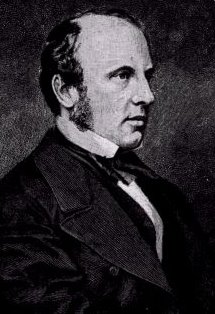Hi Visitors,
Thanks for visiting my collection on 1857 first war of independence memories.
Year 2007...The Milestone Year of India
150 Years Comlpeted for 1857 First war of India
100 Years Comlpeted for Mahatma Gandhis Satyagraha
60 Years Comlpeted for India Freedom
If the time has changed but the devotion of this freedom fighters is never been forgotten & we all should know this …is my purpose of collection.
The Indian Rebellion of 1857 was an armed uprising, mainly concentrated in north central India, against the British East India Company which occurred between early 1857 and mid 1858. The rebellion is often known by a number of different names including (in alphabetical order) the First War of Indian Independence, Indian Mutiny, Sepoy Mutiny, or Sepoy Rebellion.
R. Prashant.
Thanks for visiting my collection on 1857 first war of independence memories.
Year 2007...The Milestone Year of India
150 Years Comlpeted for 1857 First war of India
100 Years Comlpeted for Mahatma Gandhis Satyagraha
60 Years Comlpeted for India Freedom
If the time has changed but the devotion of this freedom fighters is never been forgotten & we all should know this …is my purpose of collection.
The Indian Rebellion of 1857 was an armed uprising, mainly concentrated in north central India, against the British East India Company which occurred between early 1857 and mid 1858. The rebellion is often known by a number of different names including (in alphabetical order) the First War of Indian Independence, Indian Mutiny, Sepoy Mutiny, or Sepoy Rebellion.
R. Prashant.
Tuesday, February 12, 2008
Mangal Pandey
Mangal Pandey was born on 19 July 1827 in the village of Nagwa in the Ballia district of Uttar Pradesh. A sepoy in the 34th Regiment of the Bengal Native Infantry (BNI) of the English East India Company, he entered the annals of Indian history for attacking his British officers, sparking off the First War of Indian Independence or as the British termed it, the Sepoy Mutiny of 1857. At Barrackpore near Kolkata on March 29, 1857, Pandey attacked and injured his British sergeant, besides wounding an adjutant. A native soldier prevented him from killing the adjutant and the sergant-major. He was arrested and sentenced to death. He was hanged on April 8, 1857.
Subscribe to:
Post Comments (Atom)
Freedom Fightors of 1857

All Freedom Fightors
Cartridges

Cartridges used at 1857 war
@ the cartridge
The infamous cartridge difficulties combined religious sensibilities with technological change. For years the EIC had relied on a simple but inaccurate smooth bore musket. It was decided to introduce a more accurate muzzle loading Lee-Enfield Rifle. One way to speed up the loading process was the introduction of a paper cartridge with the bullet sitting on the exact quantity of powder needed. The loader was required to bite open this paper cartridge to expose the powder. The original cartridges were made in Britain and had been covered in tallow to help protect the cartridge from the elements. Unfortunately the tallow had been made from a beef and pork fat. To the British users of these cartridges, this made no big deal. Hindu and Muslim users were horrified at the defiling fat. The EIC quickly realised its blunder and replaced the animal fat with vegetable fat but the damage had already been done. To Hindus and Muslims alike, their worst fears of being ritually humiliated had been confirmed. Many assumed that this had been a deliberate policy by the Europeans who were looking to impose their own religion on the sub-continent. Battalion after battalion refused to use the new cartridges. Some even refused to handle the cartridges when officers had allowed them the option of tearing open the cartridges instead of biting them. As far as the officers were concerned, refusing to obey an order was tantamount to mutiny as it was. Different commanders handled the situation in different ways - some with more sensitivity than others. The first shots were to be fired by (an inebriated) Mungal Pandy on March 29th at Barrackpore. He protested against the disbanding of a unit that had disobeyed orders to use the cartridges. He shot at a British sergeant-major and a lieutenant and then engaged them in a sword fight. He saw the two of them off but then shot himself in the chest when General Hearsey arrived in the parade ground. The authorities at Barrackpore were forutunate to have the European 84th regiment to hand so that the disarming of the Indian battalions could be done with the threat of force for any sepoys thinking of refusing to hand over their guns. Not all stations would be so fortunate.
India

India at 1857
Queen

Queen Great of Britan at 1857
Victoria
Victoria (Alexandrina Victoria; 24 May 1819 – 22 January 1901) was the Queen of the United Kingdom of Great Britain and Ireland from 20 June 1837, and the first Empress of India from 1 May 1876, until her death on 22 January 1901. Her reign lasted 63 years and seven months, longer than that of any other British monarch. The period centred on her reign is known as the Victorian era.
Governer Gen of India 1857

Charles John Canning
Charles John Canning
Charles John Canning, 1st Earl Canning KG GCB KCSI PC (14 December 1812–17 June 1862), known as Viscount Canning from 1837 to 1859, was an English statesman and Governor-General of India during the Mutiny of 1857.











No comments:
Post a Comment